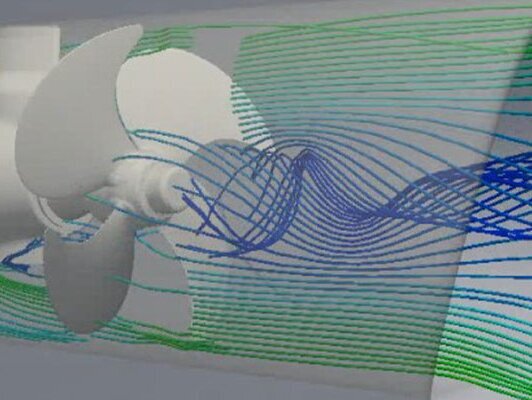Almost two decades of providing computational fluid dynamics (CFD) consultancy for commercial clients has given Brookes Bell a firm understanding of the requirements and capabilities of CFD in its application for both design and forensic investigation.
What is computational fluid dynamics?
Computational fluid dynamics (CFD) is defined as ‘the computational solution of the fundamental equations for fluid flow’.
CFD can be used to model how fluid will act around a particular geometry.
Because of this CFD has the advantage of providing significantly more information than would be obtained from real world testing or model testing including flow streamlines, pressure and velocity maps.
A wide range of surface maps on geometries of interest can be displayed and analysed for properties such as pressure, skin friction or heat transfer coefficient.
It’s also possible to obtain the properties of the fluid, such as pressure, velocity or temperature, at any point in the fluid domain.
What’s more, the ability of CFD to analyse full scale geometries also removes the scale effects which are often inherent in model testing.
Brookes Bell’s computational fluid dynamics experience
With two decades of CFD experience under our belt, Brookes Bell is well placed to provide accurate modelling that is far superior to model and real-world testing.
Automatic meshing allows rapid model building of complex and detailed geometries, which together with fully-scripted model set-up models, allows quick turnaround of validated solutions and means that costs can be kept significantly lower than model and real-world testing too.
We use OpenFOAM, ANSYS Fluent and Star-CCM+ CFD codes depending on the requirements of the analysis, with each code offering specific strengths and capabilities.
Our areas of expertise cover both aerodynamic and hydrodynamic analysis, and the free surface interaction of the water and air, as well as heat transfer analysis.
Specific examples of our CFD experience include:
- Wind and smell comfort of passenger vessel open decks
- Hull resistance and optimisation
- Propeller, propeller/rudder interaction and bow thruster analysis
- Wind and wave loading on structures
- Pool and tank sloshing
- Helipad design for certification
- Vortex-induced vibration
- Fluid-structure interaction
- Renewable energy devices, including the internal and external analysis of turbine nacelles
- Fire and smoke modelling
In forensic investigations we have used CFD to great effect in cases as diverse as:
- The modelling of alternating forces on a tunnel thruster to investigate fatigue
- The flow through ballast water pipework for the modelling of a sinking cargo vessel
- The modelling of airflow on a vehicle deck to assess the effect of hypothetical changes in ventilation on a fire
- The effect of manufacturing deviations on the performance of a main propeller
- The flow rate of fuel from a ruptured bunker tank
Our CFD experts regularly advise and assist owners, yards and consultancies in the correct application of CFD technology. To find out how Brookes Bell’s CFD expert can help you, speak to us today.

